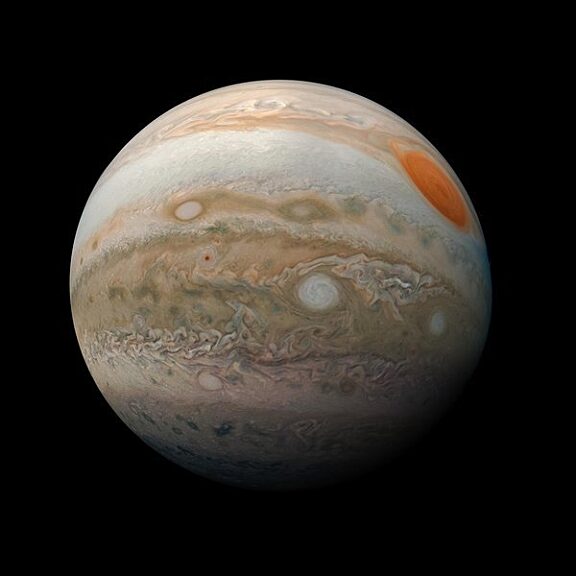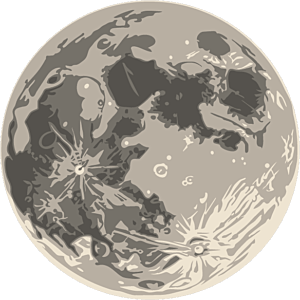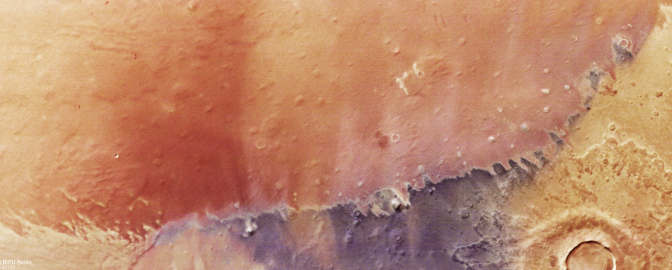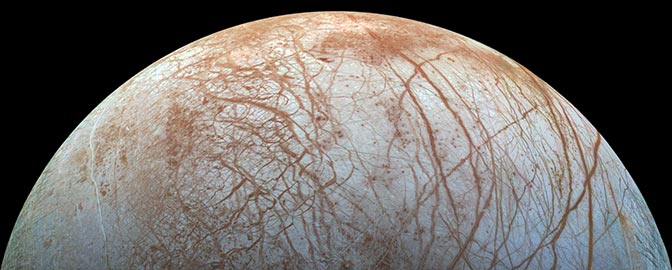The Downlink • May 30, 2025
Growing and shrinking
Space Snapshot

Jupiter is by far the largest and most massive planet in the Solar System. New research suggests it may have started out even bigger — almost twice its current size. Jupiter appears to still shrink at about 2 centimeters (about 0.8 inches) each year as it continues to cool down. Pictured: This image was created by combining data from three images of Jupiter captured by NASA's Juno spacecraft in 2019. Image credit: NASA/JPL-Caltech/SwRI/MSSS/Kevin M. Gill.
Fact Worth Sharing

Earth is slowly shrinking. Every year, our planet gains about 45,000 metric tons of mass from meteorites and dust that falls to the surface. At the same time, Earth loses about 100,000 tons of mass through the escape of atmospheric gases.
Mission Briefings


The list of dwarf planets might be about to grow. A newly discovered trans-Neptunian object may be large enough to qualify as a dwarf planet. The object is one of the most distant visible objects in our Solar System and is found in what was once thought to be an empty section of space beyond Neptune in the Kuiper Belt. Pictured: A composite image of the five known dwarf planets plus the newly discovered object 2017 OF201. Image credit: NASA/JPL-Caltech/Sihao Cheng et al.

Budget issues may force NASA to reduce ISS crew and research. The huge cuts to NASA’s budget proposed for fiscal year 2026 would likely mean that NASA has to reduce the size of the crew aboard the International Space Station, as well as the scope of research activities.

JPL is calling its remote employees back to the lab. NASA's Jet Propulsion Laboratory recently announced the termination of its telework policy, requiring over 5,500 remote or hybrid employees to return to on-site work. According to an email sent to the entire JPL workforce, those who choose not to return — or are unable to — will be considered to have resigned.
From The Planetary Society


Volcanoes abound in the Solar System, and on Planetary Radio. The latest episode of our weekly podcast compiles interview excerpts from the last 20 years, all about the volcanic worlds of our Solar System. Learn about lava flows on Venus, icy eruptions on Enceladus, methane activity on Eris, and much more. Pictured: An eruption on Jupiter’s moon Io as seen by NASA’s Galileo spacecraft in 1997. Some of the material ejected from Io’s volcanoes is drawn into Jupiter’s mass, adding to the gas giant’s heft. Image credit: NASA/JPL/DLR.

Bill Nye celebrated America’s Favorite Teacher this week. As part of a partnership with Colossal, The Planetary Society’s CEO spoke at a school assembly in Newark, New Jersey, to celebrate second-grade teacher Jonathan Koch, who won the national competition. Through the competition, Colossal raised $3.2 million for The Planetary Society to support our work educating and inspiring the next generation.

Our future in space needs your help! Since our founding 45 years ago, supporters like you have been powerful and effective advocates for NASA’s greatest missions. Now, more than ever, we need your help! Without enough funding, NASA will be forced to delay or cancel missions. Make a gift today to support The Planetary Society’s space advocacy efforts and your gift will also be matched up to $75,000 thanks to a generous Society member.
What's Up

Before dawn, look for super bright Venus in the east, reaching its highest point on June 1. In the evening, very bright Jupiter is very low in the western sky, with reddish Mars higher up. On June 1, the Moon will be near Mars. Yellowish Saturn rises in the middle of the night in the east. See our monthly night sky guide to find out what to look forward to in June.
Help save space missions. Join today!

If you are not already a member, we need your help. NASA is at a crossroads, and your support is needed today! Funding for space science and exploration is not guaranteed. It requires the voice of passionate advocates like you.
NASA is facing major budget cuts for the first time in a decade, and thousands of skilled scientists, engineers, and technicians have already been laid off at NASA centers across the US. NASA funding must grow, not shrink, if the agency is to succeed in returning to the Moon, exploring the Solar System, and seeking out life beyond Earth.
We must prevent future budget cuts. When you become a member of The Planetary Society, you join the world’s largest and most influential space advocacy nonprofit. Will you join us and enable the future of space exploration?
Wow of the Week

Micrometeorites that fall to Earth don’t just add to our mass; as the oldest kind of solid matter, they also add to our understanding of the Cosmos. This close-up image of six glass micrometeorites comes from the book “In Search of Stardust: Amazing Micro-Meteorites and Their Terrestrial Imposters,” by Jon Larsen and Jan Braly Kihle. Larsen collects these tiny space rocks and founded Project Stardust to teach others how to find and collect micrometeorites wherever they live. Image credit: Jon Larsen/Jan Braly Kihle.
Send us your artwork!
We love to feature space artwork in the Downlink. If you create any kind of space-related art, we invite you to send it to us by replying to any Downlink email or writing to [email protected]. Please let us know in your email if you’re a Planetary Society member!


 Explore Worlds
Explore Worlds Find Life
Find Life Defend Earth
Defend Earth

